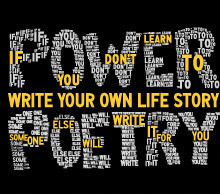my story friend's story
Location
(poems go here)
Comments
Login or register to post a comment.
benimana
I want to start.
benimana
When I first saw her nearly three years ago she seemed more shadowlike than human, a skeletal apparition lying on a camp bed in a country where corpses littered the roads and fields. Her hand had been chopped in half and the wound had become infected. It had taken on an ominous black colour. In addition, there were two deep gashes on the back of her head. There were no painkillers or anaesthetics in the little room she shared with three other children. When it came to the time for changing her dressings the girl winced and cried in pain. I gave the nurse my stock of paracetamol and a bag of sweets. It was a pitifully inadequate offering but the only comfort I could give. The nurse told me the child's name was Valentina. She was 13 and her family had been killed in a massacre carried out by Hutu soldiers and a militiamen a few weeks before in the nearby parish of Nyarubuye. Valentina was among a small group of survivors. "She will probably die," the nurse said. I left Rwanda shortly afterwards vowing never to go back. In a few weeks I had witnessed brutality and evil on a terrifying scale. Nothing could have prepared me for the immensity of the killings or the hatred I encountered among those who had carried out the genocide. However, Rwanda did not go away, nor did the memory of Valentina and the other survivors of genocide. I found myself endlessly questioning: how could this have happened? How could people butcher children? What kind of man can kill a child? I was still in search of the answer three years later when I returned. The country had changed dramatically. The schools had been reopened and the fields were full of peasants harvesting their crops. The sound of shooting had been replaced by the ancient chorus of African village life: crying babies, whinnying goats and the interminable crowing of roosters. The church that had been the focal point of the massacre had been cleaned up, the bodies removed and placed in a series of rooms nearby. These rooms had also been the scene of particularly brutal killings. Now the government was preserving them, replete with skeletons and mouldering corpses, as a memorial to genocide. Within minutes of arriving at Nyarubuye I learnt Valentina had not died. Shortly after I had last seen her she had been transferred to a hospital and, against the medical odds, survived her injuries. Now, meeting her in front of the church, I saw a tall and beautiful 16-year-old nothing like the emaciated child of three years previously. But before long I realised that this new appearance was deceptive. As Valentina patiently told me her full, terrible story I found myself wavering between shock and anger.
benimana
The story of what happened at the church of Nyarubuye is more than a straightforward commentary on humanity's capacity for evil. It is a very particular story about the cruelty inflicted upon children by adults, people who were their neighbours and whom they trusted. It began on a Friday afternoon in the middle of April. For days the Tutsis of Nyarubuye had sensed am impending disaster. The were aware that elsewhere in the country massacres of Tutsis had already begun. Ten days previously, Juvenal Habyarimana, the president of Rwanda, had been assassinated, most probably by members of his political circle.
Although he was a Hutu, Habyarimana was seen as having become weak in his dealings with the Tutsis and the moderate Hutus opposition groups. The extremists feared the power-sharing agreement signed by Habyarimana would see the erosion of their power and financial privilege.
